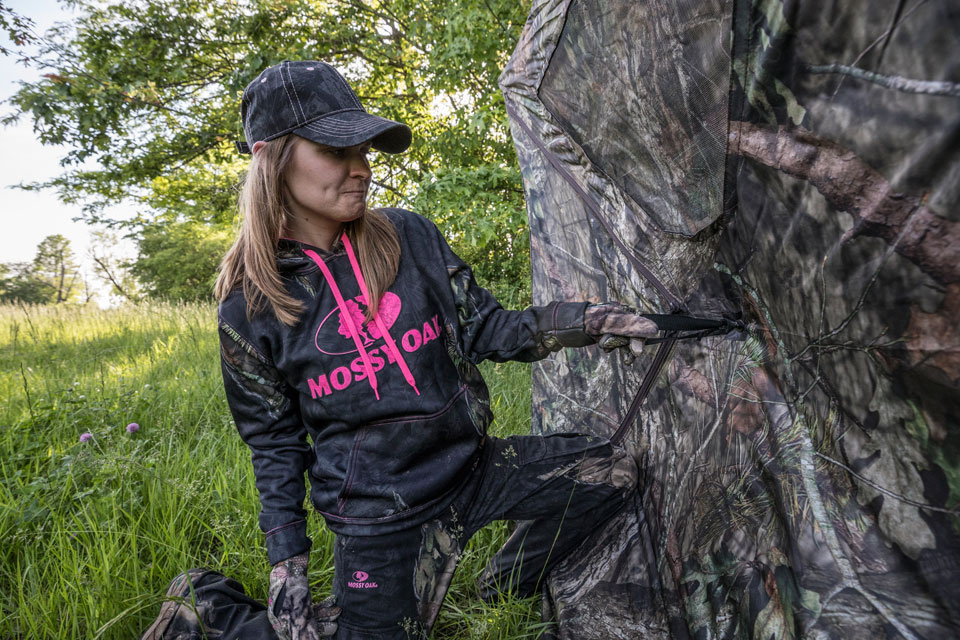Heath Wood
Each year as early summer rolls around, the thought of deer season preparation begins to lay heavy on a hunter’s mind. Hunters will begin hanging tree stands as well as placing a few ground blinds. The excitement level is already building, however, don’t let the excitement get the best of you just yet. There are a few things hunters need to take into consideration when placing ground blinds.
Location, location, location
This is the main factor when placing ground blinds. Mossy Oak’s Cuz Strickland likes to find spots that connect popular food sources, such as soybeans, to bedding areas. This is especially true during early season when deer are the most patternable. This is mainly due to the breeding season, which has yet to cross the mind of bucks, as well as the weather still being warm.
Basically, deer feed through the night into the morning and once the temperature starts to rise, deer will go to bedding areas. Catching deer traveling from bed to food is a great way to score on a buck early.
Try to set blinds in areas that would best suit certain wind directions. For example, if hunting evenings, it is most likely that deer will go from bedding areas and head to the food source. If the wind direction is in the direction of the bedding area, do not hunt it. Try to keep the wind direction in the hunter’s face; this will eliminate deer smelling human scent when trying to sneak through.

Setting blinds up in the early summer is a great way to get ahead of the game. If you take the time to scout, set up blinds and even go as far as to brush them and spray the entire blind with a scent eliminating spray far ahead of season, you will reap with benefits as hunting season approaches. Doing your homework early will give deer time to adapt, allowing them to be on a natural movement when ready to hunt. Spraying a scent eliminator after assembling the blind will ensure that the blind will remain “invisible” due to the fact that a scent eliminator will hide human odors that may be contaminating the area.
Early season is a great time to hunt using ground blinds. However, once the rut progresses, hunters can adjust to deer movement. When bucks start scraping at the edge of fields or particular travel routes, one can move ground blinds into place to catch bucks checking on those scrapes as the rut continues. Another great time to use a ground blind is during late fall, when rut activity has ended and deer are back to a heavy feeding pattern to begin storing food for the winter. Having a ground blind at the edge of a food source allows the hunter to take advantage of this feeding pattern as well as to stay out of the cold elements and be able to play the waiting game as deer feed throughout the evening.
There are several ways that a ground blind can be effective. By scouting with game cameras, one can find what time the best deer movement occurs. This will help determine when the hunter needs to be in the blind.
Begin early, scout often and prepare to adjust with the deer throughout the season. The task of staying concealed, hunting no matter what the conditions, and being able to make a successful shot will be easier, allowing the hunter to be more successful.



























